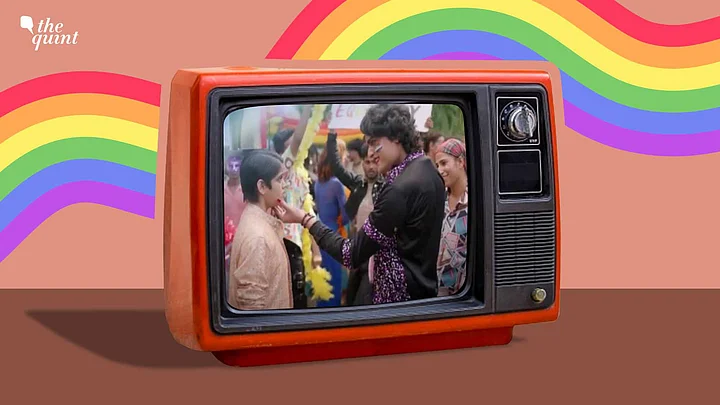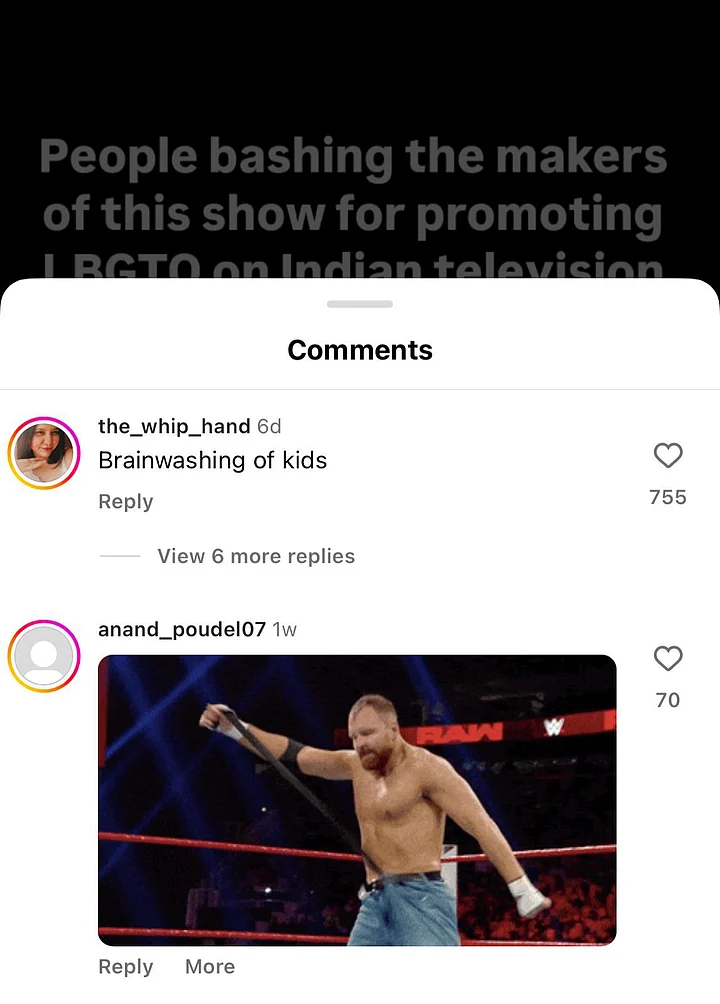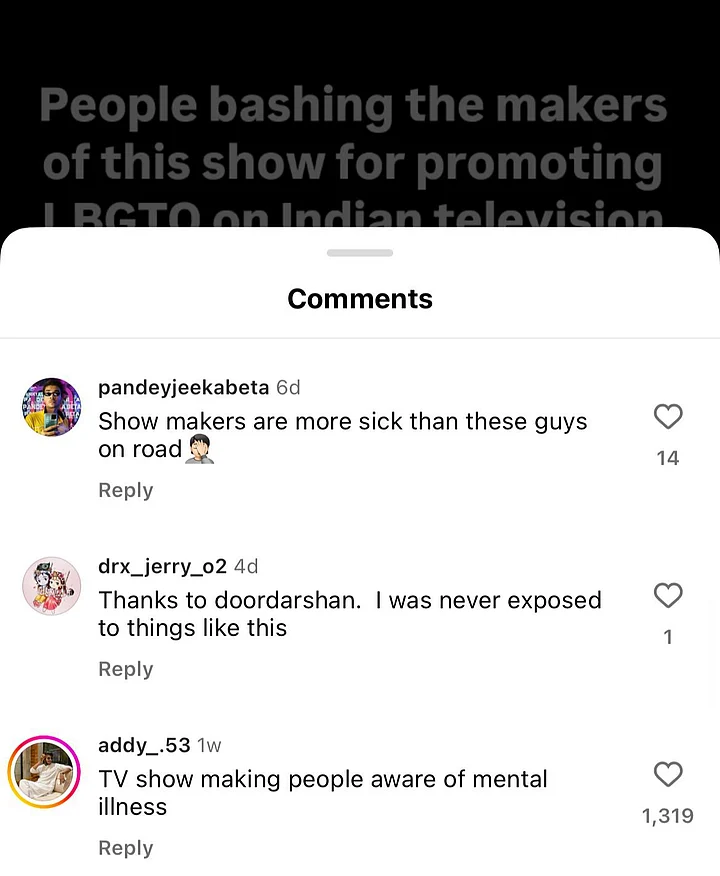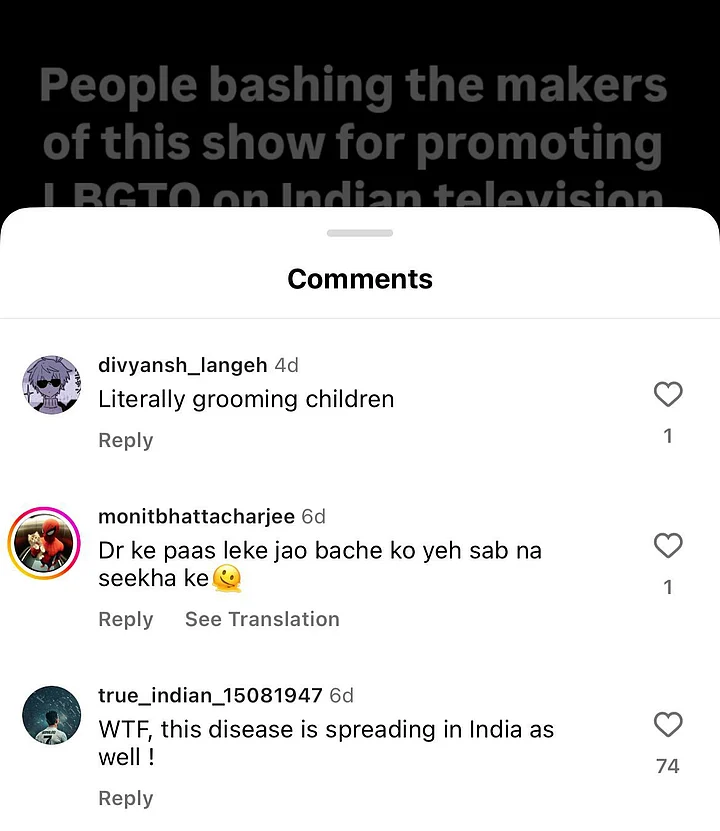(Trigger Warning: This article contains mentions of transphobia, queerphobia, and suicide.)
While queer representation in mainstream Indian cinema is on a slow yet uphill climb, the same is untrue for the TV industry.
Hindi serials are starting to find their footing in depicting women sensitively, but queerness is barely visible on our television screens.
What’s arguably worse is that with comedy shows like The Kapil Sharma Show becoming a household name, any signs of queerness or gender variance on television are strictly reserved for cis male actors (case in point: Sunil Grover as 'Gutthi') cross-dressing for transphobic punchlines.
This is why the recent launch of Krishna Mohini, a new show on Colours TV featuring a transgender child in one of its titular roles, was initially praised for its unique plot.
The show follows two siblings, Krishna (played by Debattama Saha) and Mohan (played by Ketaki Kulkarni) as they navigate life in Dwarka. Mohan struggles with their gender identity and faces regular queerphobic abuse, and through it all Krishna exemplifies unconditional love and support for her sibling.
However, one particular scene from the show recently went viral on platforms like Instagram and X (formerly Twitter), prompting queerphobic discourse and backlash, which has in turn, exposed some deep-seated issues within Indian social media spaces.
First Pride March on Indian TV?
The episode, that is now doing the rounds on the internet, shows the sibling duo travelling to Mumbai where Mohan accidentally finds themself amidst a pride march.
Touted as the first pride scene on Indian TV, the scene features queer and trans people welcoming Mohan into the pride march, and patiently answering all their anxiety-riddled questions.
Their exchange touches on familial acceptance within the community, gender euphoria, and the divide between urban and rural queer spaces.
Take a look:
The scene is not without its faults, and we’ll get to those shortly.
However, managing to depict a pride march scene while portraying queer Indians in a fairly positive light is not a common occurrence on Indian family television.
Besides, being the first show to do so means that despite its flaws, this scene will pave the way for other mainstream Indian channels to normalise LGBTQ+ visibility. That is a big step in the right direction!
Why the Outrage?
As it usually goes with wholesome desi queer content on the internet, this scene's clips have made their way into some exceptionally homophobic sections of social media, and the results are both disheartening and dangerous.
Circulated by Indian meme pages across Instagram and X, the viral clip has led to criticism from netizens who are accusing the actors and showrunners of "brainwashing kids" and "grooming children."
Take a look, here:
Popular Indian texts and ancient cultural epitaphs have always depicted queerness as natural.
However, rising anti-LGBTQ+ laws and hate speech in the West have hampered Indian views on the community. These sections – be it espousing queerphobic rhetoric under the guise of "concern for children" or referring to queerness as a "disease spreading from the West" – have made it much harder for queer folks to thrive in an online space.
Take the tragic case of Pranshu, for example, a 16-year-old makeup enthusiast who died by suicide in November last year, after facing severe online harassment. The news of their death only spiked the volume of queerphobic comments their page courted, with several netizens even celebrating the heartbreaking news.
Incidents like these not only reveal the huge impact such homophobic rhetoric can have on LGBTQ+ citizens but also point to a blatant lack of empathy for queer kids.
If these 'concerned' individuals were genuinely worried that exposing children to queer media would somehow change their sexuality, they should consider the countless queer kids who grew up without any LGBTQ+ characters in media – and surprise, they still grew up queer.
‘Cis-Het Gaze’ in Krishna Mohini
While it's noteworthy that Ketaki Kulkarni, a cisgender woman was hired to play the role of Mohan, a trans-feminine person, the show has some glaring faults which are not easy to overlook.
The openly queer characters are caricatured, highlighting an absence of nuance.
For a show being promoted as a pioneer in trans representation on Hindi TV, it is quite poorly researched.
There are certain scenes where they don’t even get the pride colours right! To top it off, there’s a scene with a Pride poster saying, “Support ALL our troops”!
But laughable fallacies aside, the show operates on a cis-hetero superiority complex.
Mohan exists as a one-dimensional, pitiable character at the utmost mercy of Krishna’s allyship. The violence repeatedly inflicted on them is highly gratuitous and begs the question: will queer shows on Indian TV ever cater to queer audiences?
More often than not, trans people in media only exist within the binaries of victimhood and villainy.
Until queer and trans representation is ensured both in front and behind the cameras, we will be reduced to inauthentic characters who only exist to bolster the cis-het gaze.
This gaze is gradually being fractured by some sensitively crafted LGBTQ+ Indian films, notably Zoya Akhtar’s short in Bombay Velvet and more recently, Mammootty’s Kathaal - The Core.
From Meher (played by Trinetra Haldar Gummaraju) in Prime Video’s Made In Heaven to Kullu (played by Bonita Rajpurohit) in Dibakar Banerjee’s Love Sex Dhoka 2, there’s no doubt that authentic trans representation can exist without the pitfalls of mockery or mal-intent.
(Phelian is an intersectional feminist, writer, and filmmaker, notably recognised for 'They/Them', a trans-led short film delving into the complexities of gender dysphoria. Featured in major platforms like The Quint, Gaysi Family, and Vogue India, they have always been committed to exploring and expanding trans-nonbinary representation in desi media and pop culture. This is an opinion piece and the views expressed above are the author’s own. The Quint neither endorses nor is responsible for the same.)
(At The Quint, we question everything. Play an active role in shaping our journalism by becoming a member today.)



